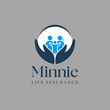Our Products
Whole Life
Whole life insurance is a type of permanent life insurance that provides coverage for the insured person's entire lifetime. Here are some key features:
Lifetime Coverage: Unlike term life insurance, which covers you for a specific period, whole life insurance lasts for your entire life
Cash Value Component: Whole life insurance policies include a savings component known as the cash value, which accumulates over time on a tax-deferred basis
You can borrow against or withdraw from this cash value while you're alive
Level Premiums: The premiums you pay remain the same throughout the life of the policy
Guaranteed Death Benefit: Your beneficiaries receive a guaranteed death benefit when you pass away
Whole life insurance can be more expensive than term life insurance due to these guarantees and the cash value component it often chosen by individuals who want lifelong coverage and the ability to build cash value over time.

Whole life Vs Term
Term Life
Term life insurance is a type of life insurance that provides coverage for a specific period, or "term," such as 10, 20, or 30 years. If the insured person dies during this term, the policy pays a death benefit to the beneficiaries. Here are some key points about term life insurance:
Key Features:
Fixed Term: Coverage lasts for a predetermined period.
Death Benefit: Provides a payout to beneficiaries if the insured dies during the term.
No Cash Value: Unlike whole life insurance, term life does not accumulate cash value.
Affordable Premiums: Generally more affordable than permanent life insurance.
Types of Term Life Insurance:
Level Term: Premiums and death benefit remain constant throughout the term.
Decreasing Term: Death benefit decreases over time, often used for mortgage protection.
Renewable Term: Allows policy renewal at the end of the term without a medical exam, though premiums may increase.
Pros and Cons:
Pros:
Cost-Effective: Lower premiums compared to permanent life insurance.
Simplicity: Straightforward coverage without investment components.
Flexibility: Can be tailored to cover specific financial obligations.
Cons:
Temporary Coverage: Only provides protection for a limited time.
No Cash Value: Does not build equity or savings.


Universal Life (UL)
Universal life (UL) insurance is a type of permanent life insurance that offers flexibility in premiums and death benefits, along with a cash value component. Here are some key points about it:
Flexible Premiums: You can adjust the amount and timing of your premium payments within certain limits.
Cash Value: Part of your premium goes into a cash value account that earns interest over time.
Adjustable Death Benefit: You can increase or decrease the death benefit, although increasing it may require a medical exam.
Investment Component: The cash value can be invested, and its growth depends on the performance of the investments chosen.
However, it's important to note that if the investments underperform or you don't pay enough premiums, it could affect your policy's cash value and death benefie.

Universal Life
Final Expense
This type of insurance is designed to cover end-of-life expenses, such as funeral arrangements, medical bills, and other costs that might arise
Coverage: Typically, final expense insurance provides a death benefit ranging from $2,000 to $35,000
Purpose: The payout can be used for funeral services, cremation, medical bills, or any other expenses
Eligibility: It's usually easy to qualify for, often without needing a medical exam
Premiums: Premiums are fixed and do not increase over time to include your background, experiences, and any unique aspects that set your business apart. Highlight your mission, values, and the benefits your customers can expect.

